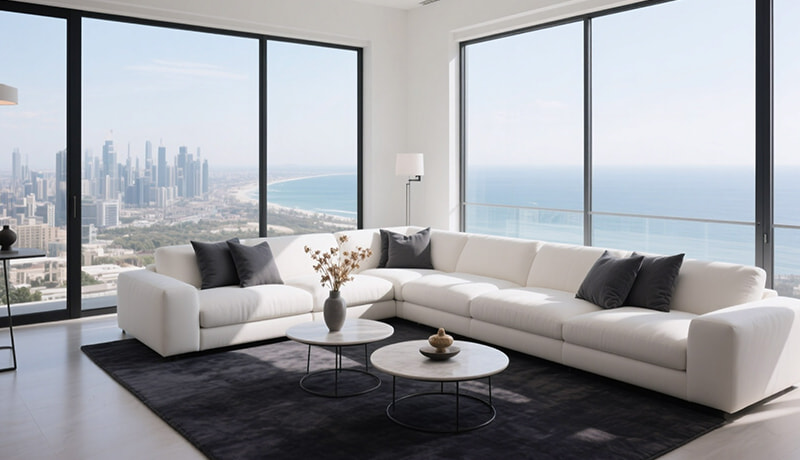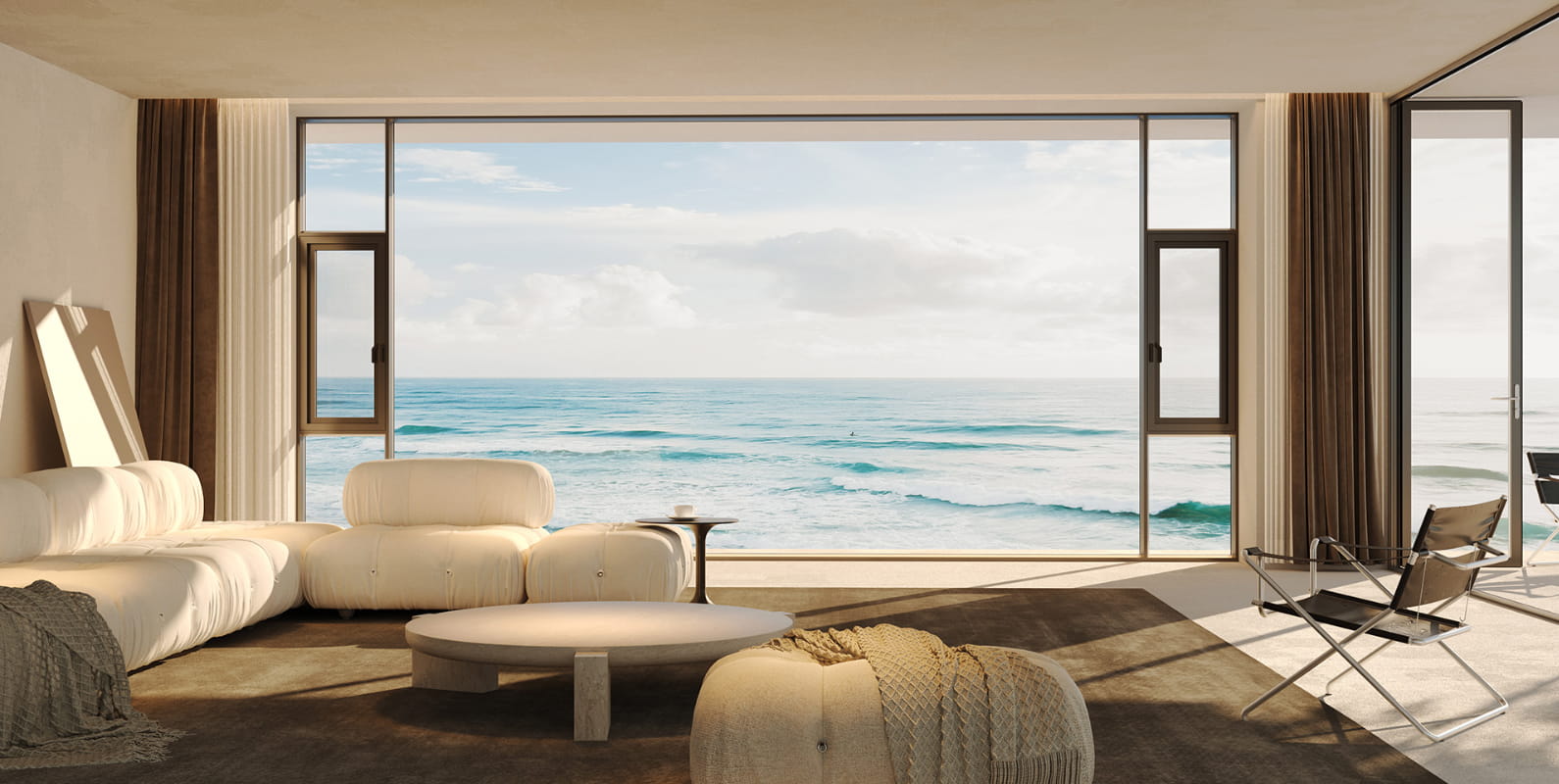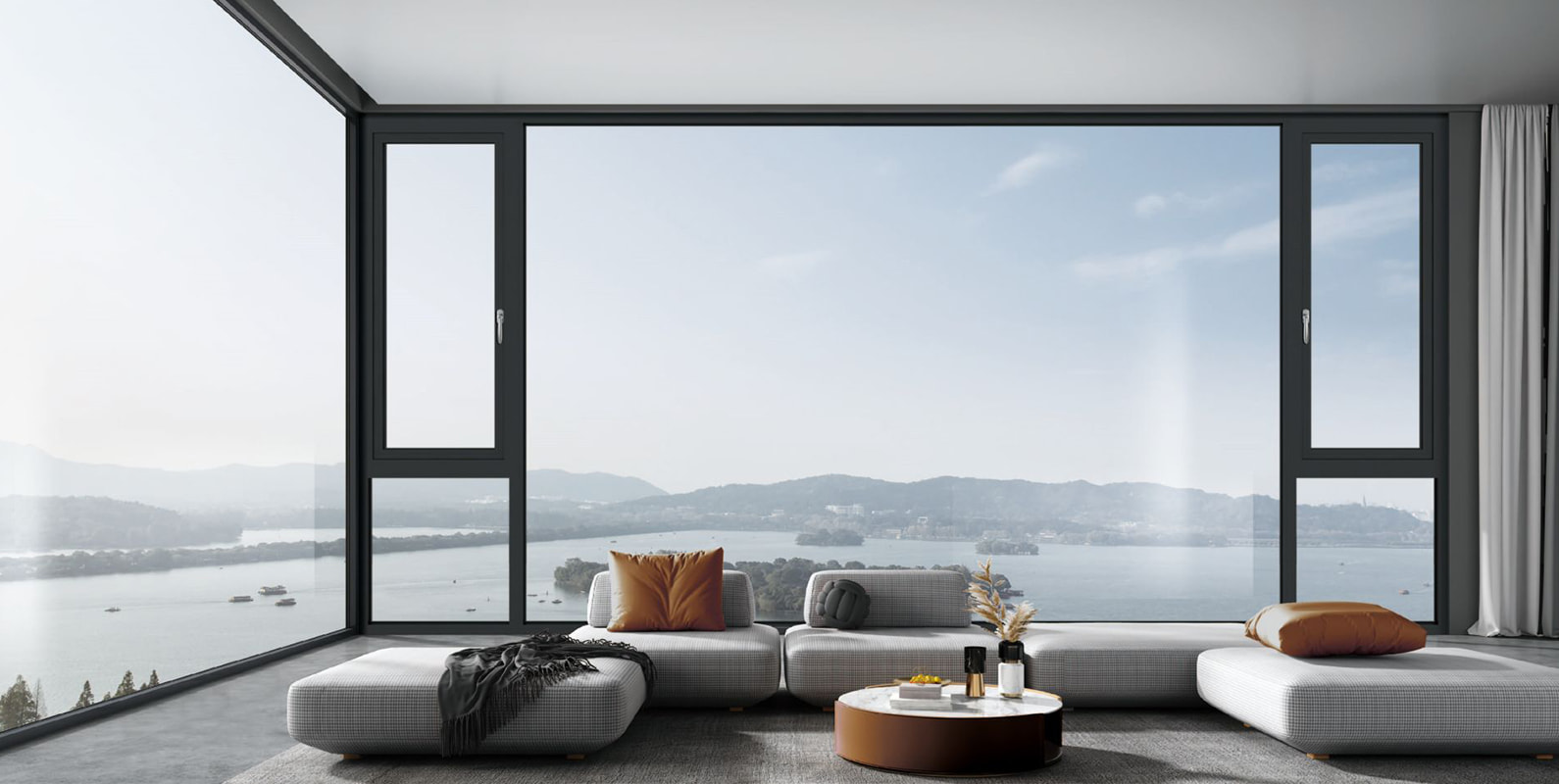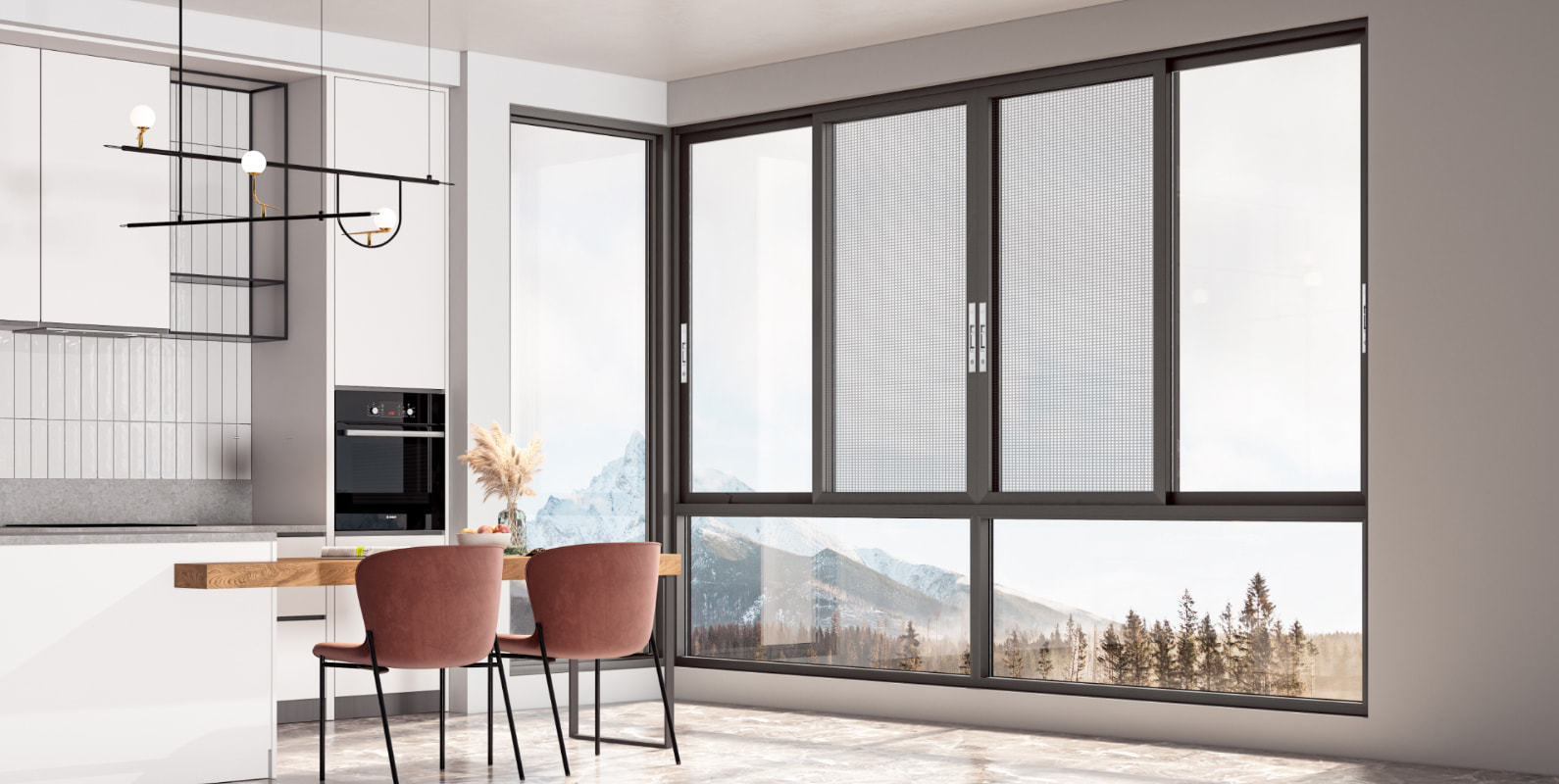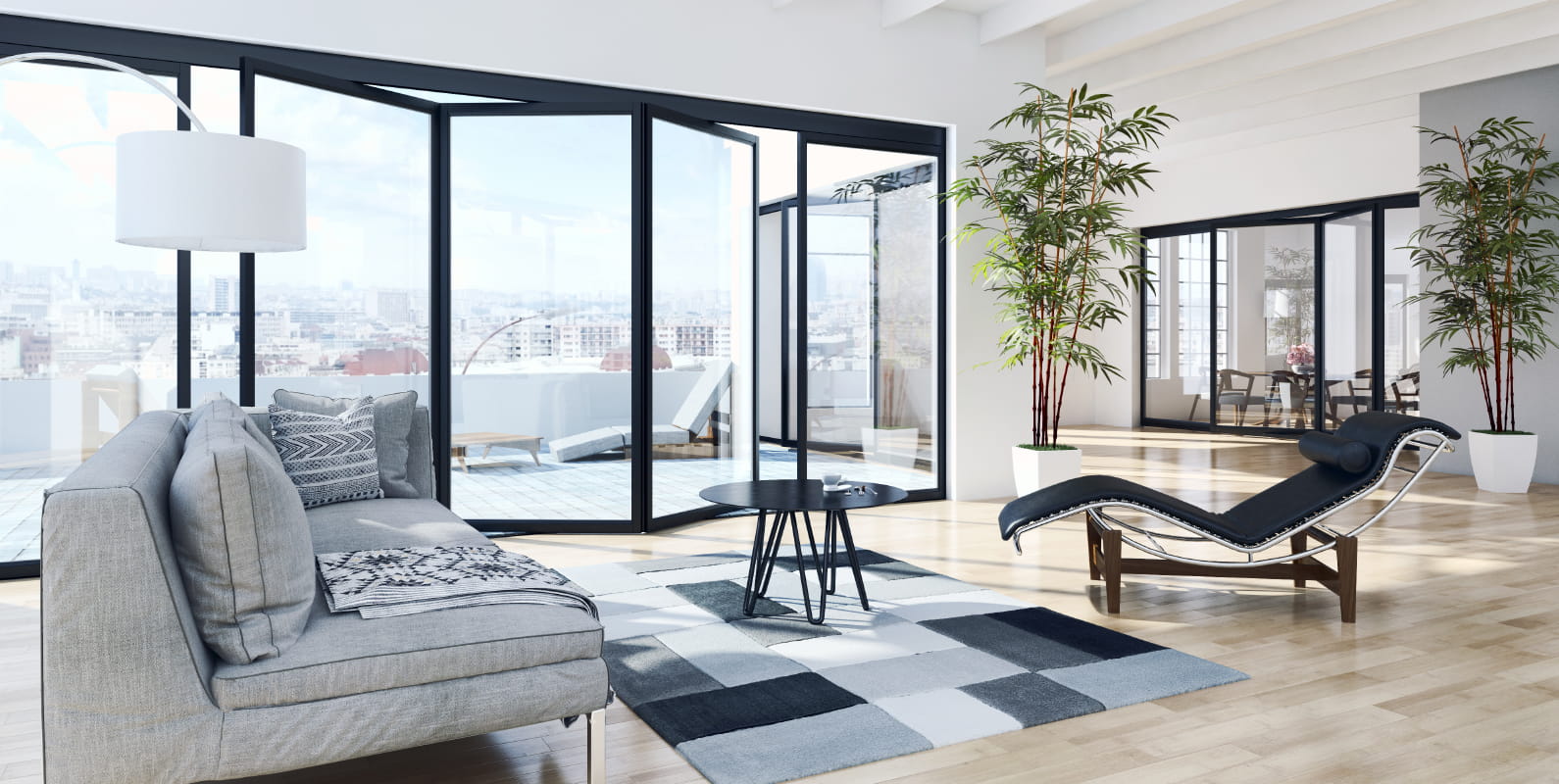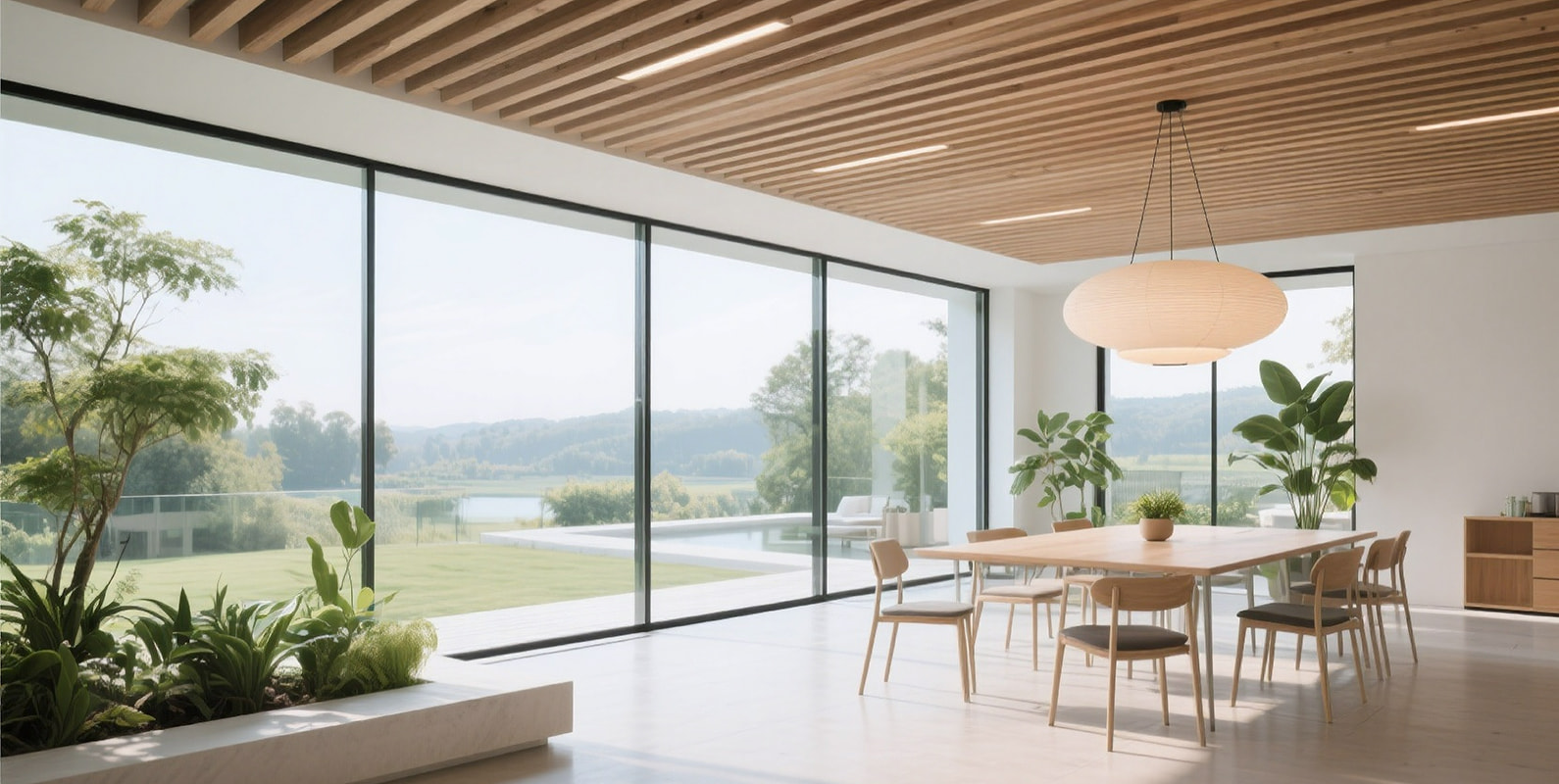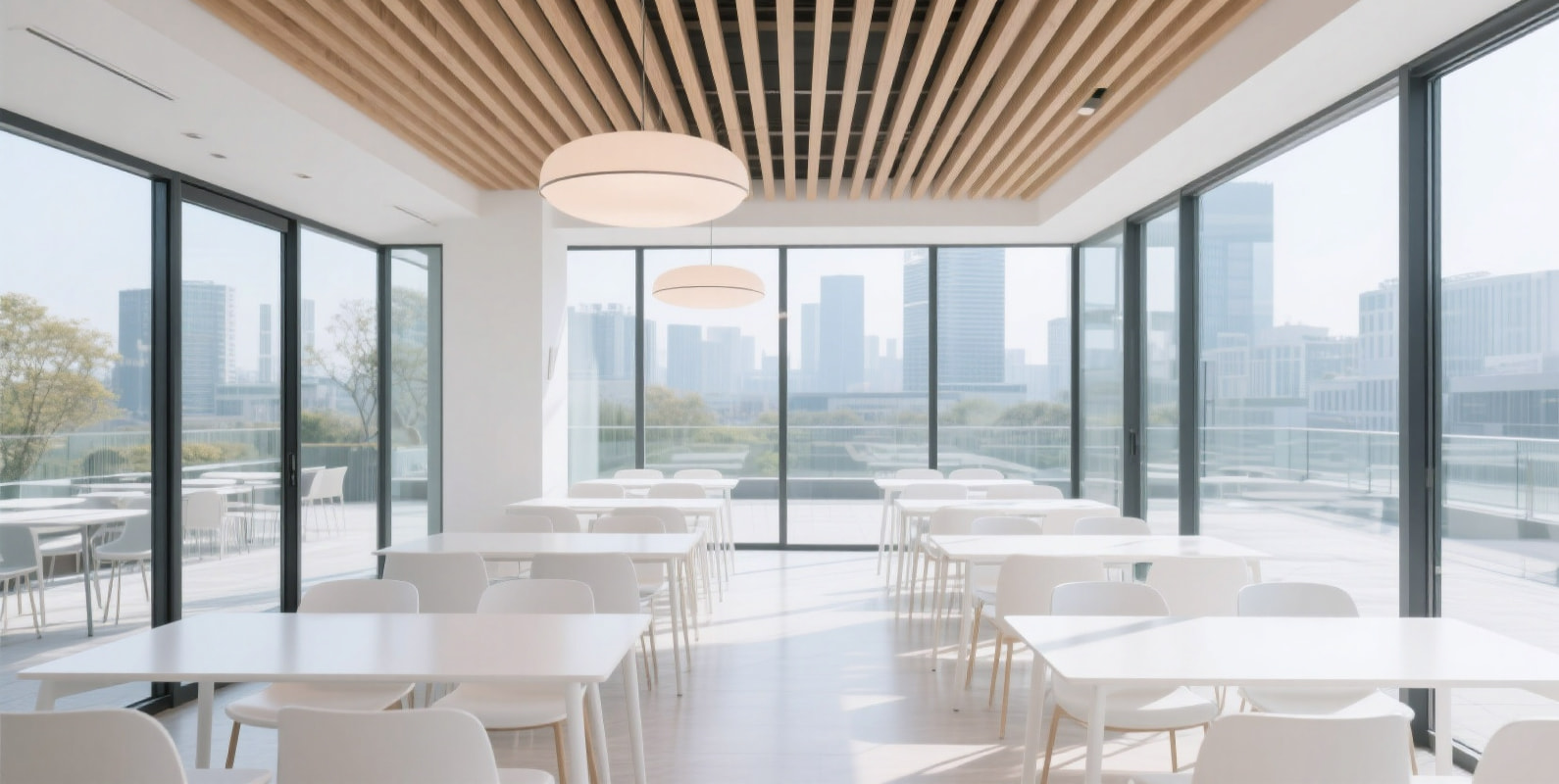The high-security smart aluminum alloy system window is a high-end window type that integrates intelligent technology and system door and window technology. Through temperature, humidity, wind, rain, light, and other sensors and Internet of Things technology, it realizes the functional upgrade of "environmental perception—active response—intelligent linkage." Its core advantages are: Built-in sensors can automatically adjust the opening and closing of window sashes, such as intelligent ventilation when air quality decreases, and automatic closing and locking when wind and rain come; it supports multiple controls such as mobile phone apps, voice commands, touch panels, and links with smart homes, such as air conditioning and fresh air systems, to optimize energy consumption and comfort; It adopts broken bridge aluminum multi-cavity profiles, low-E hollow glass (filled with inert gas), and a three-glass two-cavity structure, combined with magnetic sealing strips and imported intelligent hardware (such as electric handles and anti-fall chains), significantly improving thermal insulation, sound insulation, and safety performance (sound insulation of more than 40 dB and thermal conductivity as low as 0.8-1.5 W/(㎡・K)); the security level is equipped with anti-pry alarms, tilt monitoring, and other devices, and high-rise scenes are equipped with overload-bearing anti-fall systems as standard. It is suitable for scenarios with high requirements for intelligence, comfort, and safety, such as high-end residences, office buildings, and medical facilities.


 中文简体
中文简体 English
English